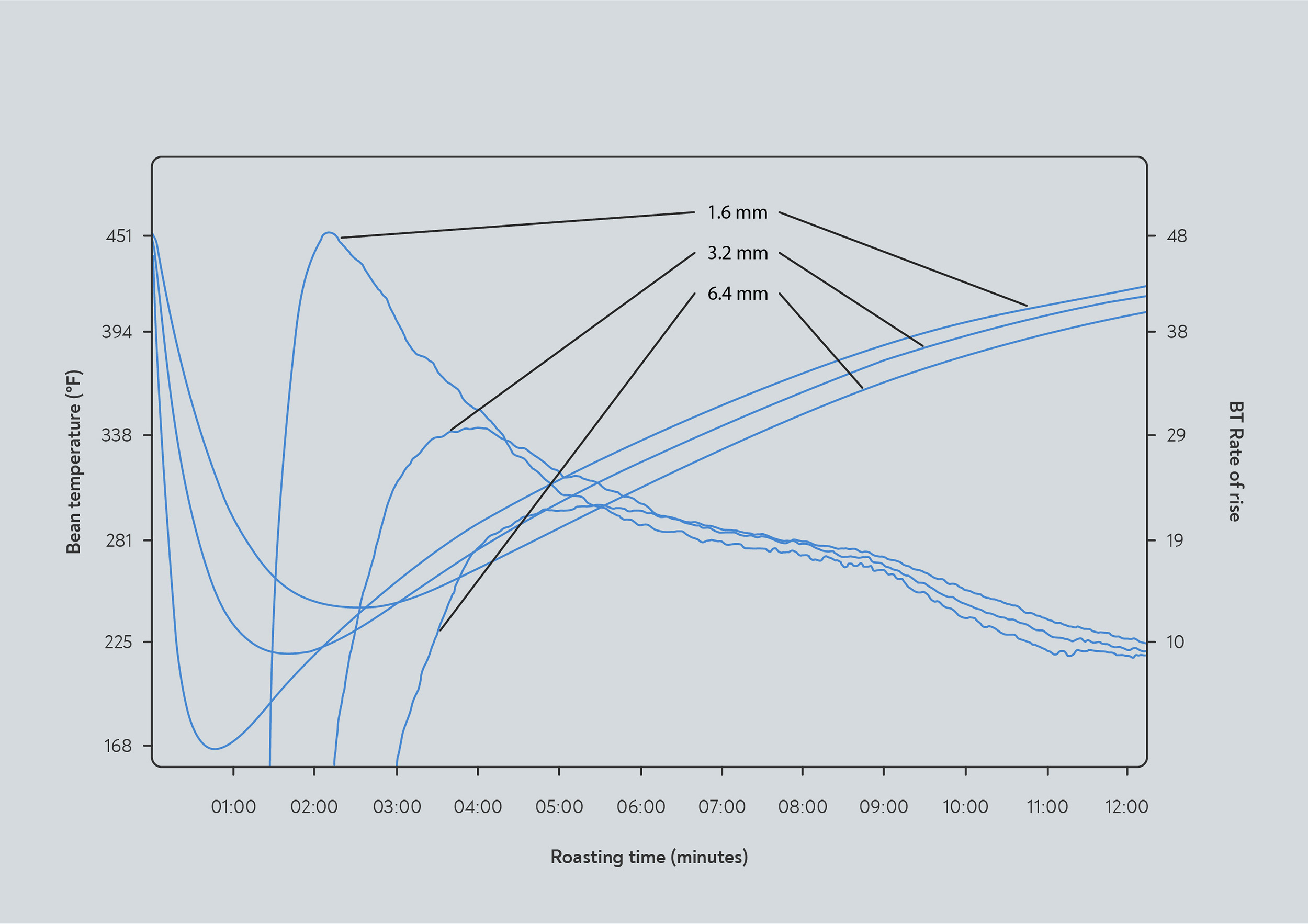As we discussed in the previous lesson, thinner probes respond more quickly to temperature changes. The temperature reading a thermocouple gives is the temperature of the probe itself, not the temperature of its surroundings. Thicker probes take longer to heat up or cool down, and therefore they respond more slowly to temperature changes. The probe diameter can therefore dramatically affect the shape of a roast curve.
 Thermocouples of different diameters present very different roast curves when measuring the same roast. Adapted from Hoos (2017)
Thermocouples of different diameters present very different roast curves when measuring the same roast. Adapted from Hoos (2017)
The roast curves shown in the figure, taken from the same roast batch, demonstrate the difference that probe diameter makes. The thinnest probe is more responsive and therefore shows a faster turnaround and reads a higher temperature throughout the roast. The thickest probe responds much more slowly and gives a final temperature reading 13°F lower than that of the thinnest probe (Hoos 2017).
Thicker probes have the advantage of being sturdier, though. A good compromise is a probe that has a thick sheath but tapers to a narrower tip so that the probe responds more quickly to temperature changes.
For accurate measurements, it’s important to insert the probe deep enough into the roaster. As a general rule, the probe should extend into the roaster by a factor of at least 10 times its diameter. If the probe is inserted less deeply, the temperature readout may be affected by heat conducted from the wall of the roaster or by conduction through the probe to the outside of the roaster.
A thinner probe will conduct less heat from the roaster wall and is thus less prone to this source of error. Mounting the probe with an insulated housing can also help by preventing conduction between the probe and the roaster wall.
Probes measuring the temperature of roasting gases may be affected by changes in the airflow or humidity inside the roaster. Humid air transmits heat more effectively because of its higher heat capacity (Zhang et al 2007) and therefore increases the responsiveness of the probe to temperature changes.